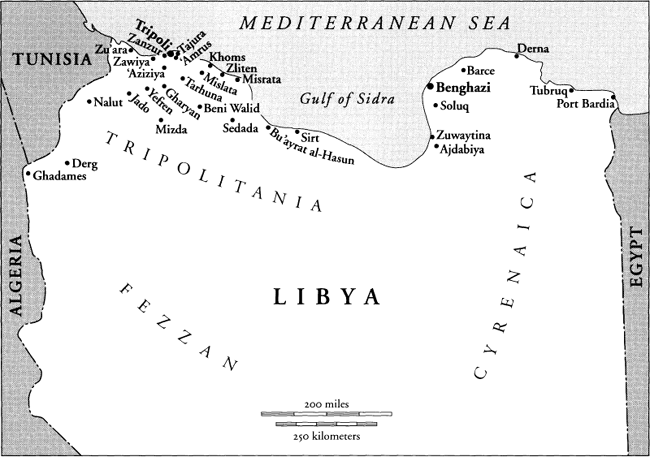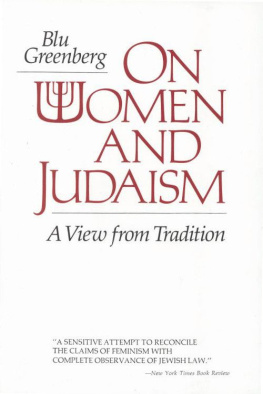
Change within Tradition
among
Jewish Women
in
Libya


Change within Tradition
among
Jewish Women
in
Libya

Rachel Simon

This book is published with the assistance of a grant from the Stroum Book Fund, established through the generosity of Samuel and Althea Stroum.
Copyright 1992 by the University of Washington Press
Printed in the United States of America
All rights reserved. No part of this publication may be reproduced or transmitted in any form or by any means, electronic or mechanical, including photocopy, recording, or any information storage or retrieval system, without permission in writing from the publisher.
LIBRARY OF CONGRESS CATALOGING-IN-PUBLICATION DATA
Simon, Rachel
Change within tradition among Jewish women in Libya / Rachel Simon.
p. cm.
A Samuel and Althea Stroum book.
Includes bibliographical references and index.
ISBN 0-295-971673 (alk. paper)
1. JewsLibyaHistory19th century. 2. JewsLibyaHistory20th century. 3. Women, JewishLibya. 4. LibyaEthnic relations. I. Title.
DS 135.L44S56 1992
305.488924061209034dc20 | 91-35675 |
CIP |
The paper used in this publication meets the minimum requirements of American National Standard for Information SciencesPermanence of Paper for Printed Library Materials, ANSI Z 39.48-1984.


CONTENTS


ABBREVIATIONS

ADEI | Associazione Donne Ebree dItalia |
AIU | Alliance Isralite Universelle, Paris |
AJDC | American Joint Distribution Committee |
ASD | Archivio Storico e Diplomatico, Rome |
BMA | British Military Administration |
CAHJP | Central Archives for the History of the Jewish People, Jerusalem |
CZA | Central Zionist Archives, Jerusalem |
ENIO | Ecole Normale Isralite Orientale |
GIT | Giovent Israelitica Tripolitana |
JNF | Jewish National Fund |
MAL | Military Administration Lira |
PRO | Public Record Office, London |
SEF | Societ Ebraica Femminile |
WIZO | Womens International Zionist Organization |

ACKNOWLEDGMENTS

I would like to thank the staffs of the following archives and libraries, where most of the research for this study was conducted: Archivio Storico e Diplomatico, Rome; Ben Zvi Institute, Jerusalem; Central Archives for the History of the Jewish People, Jerusalem; Central Zionist Archives, Jerusalem; National and University Library, Jerusalem; Princeton University Library, Princeton, New Jersey; Public Record Office, London; and University of Washington Libraries, Seattle, Washington. The study was written in part while I was a Stroum Fellow for Advanced Research in Jewish Studies in the Jewish Studies Program, the Henry M. Jackson School of International Studies, University of Washington, Seattle. I would like to thank the Jewish Studies Program and the Middle East Center at the University of Washington for their support during my stay in Seattle. Thanks also to the University of Washington Press, and especially to Pamela J. Bruton for the thorough editing. Last but not least, special thanks to my family for their support during the various phases of this study.

Change within Tradition
among
Jewish Women
in
Libya


Introduction

By the end of the nineteenth century, the societies of the Middle East and North Africa, along with other members of the world community, had witnessed far-reaching changes triggered by political, economic, social, and cultural developments. This study focuses on those changes influencing Jewish women in Libya during the late nineteenth century until the mass emigration of Jews from Libya in the mid-twentieth century. It examines how changes in Libyan society as a whole (including foreign interventions) affected Libyan Jewish women and analyzes the developments in their status, family life, work, education, and participation in public life. It also examines how the developments in each of these spheres influenced one another and how changes were woven into the traditional way of life and thought.
THE JEWISH PRESENCE IN LIBYA
With the departure of more than 4,000 Jews from Libya in the summer of 1967, a virtual end was put to the ancient Jewish presence in the region. The hasty mass evacuation of Jews from Libya in 1967 was triggered by the anti-Jewish riots in Tripoli during the Arab-Israeli Six-Day
Prior to this, there was little voluntary population movement among the Libyan Jews: they experienced no significant permanent migration waves, and the size and spread of their settlements were conditioned primarily by external factors, such as economic hardships and security problems. Roman retaliation following the revolt against Trajan in Cyrenaica (11517 CE ), the Arab penetration starting in the mid-seventh century, and continuous rebellions of the indigenous population against the central regime, which often resulted in mass deportationsall these as well as environmental and economic factors contributed to the decreasing numbers of Libyan Jews and their isolation from the rest of the Jewish world. When the Ottomans occupied Tripoli in 1551, there were hardly any urban Jews in Libya. In the following years, Jews from the Tripolitanian hinterland gradually moved to the Mediterranean coastal towns and brought with them numerous manners and customs that were influenced by those of the non-Jewish majority.
Next page
















 CONTENTS
CONTENTS